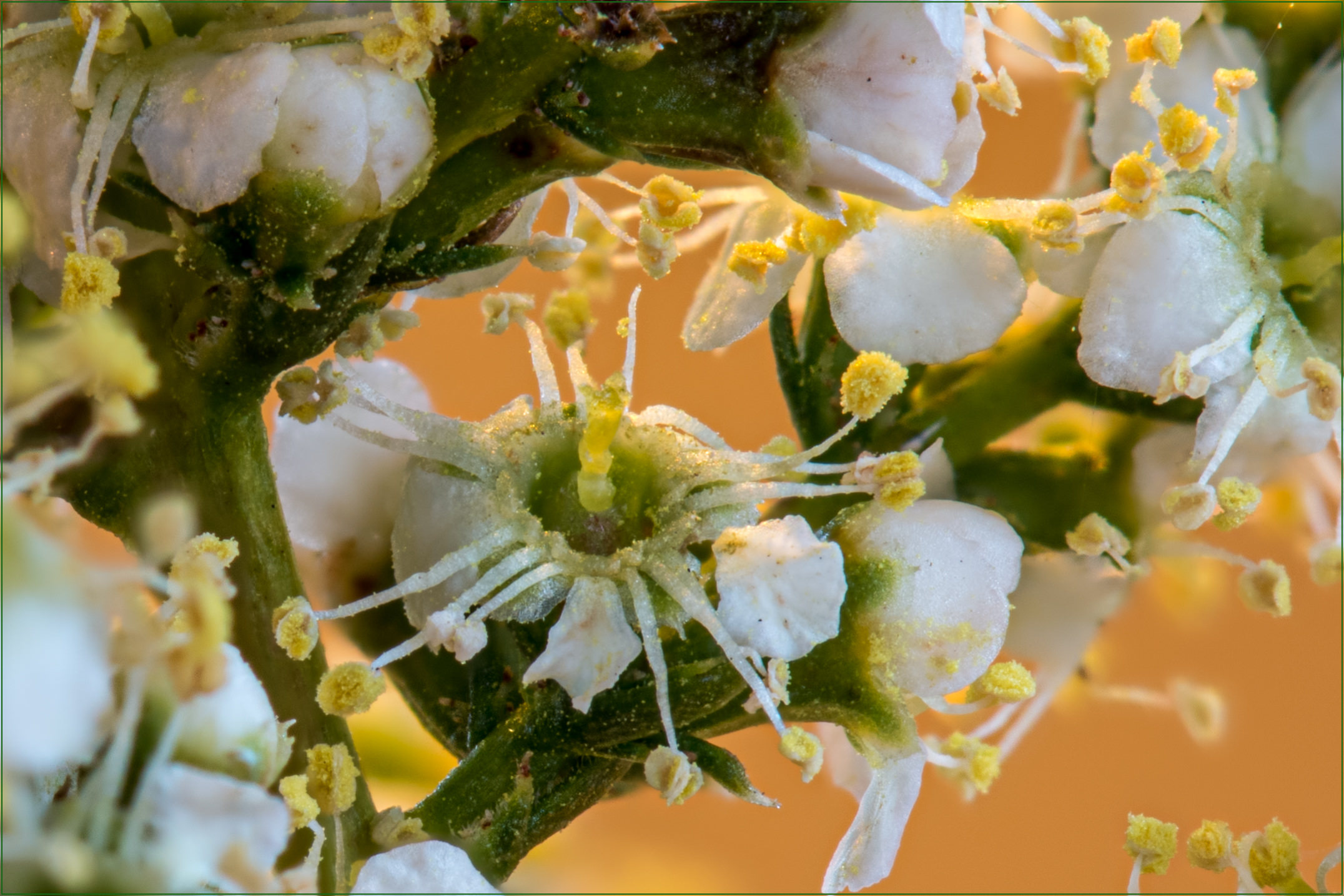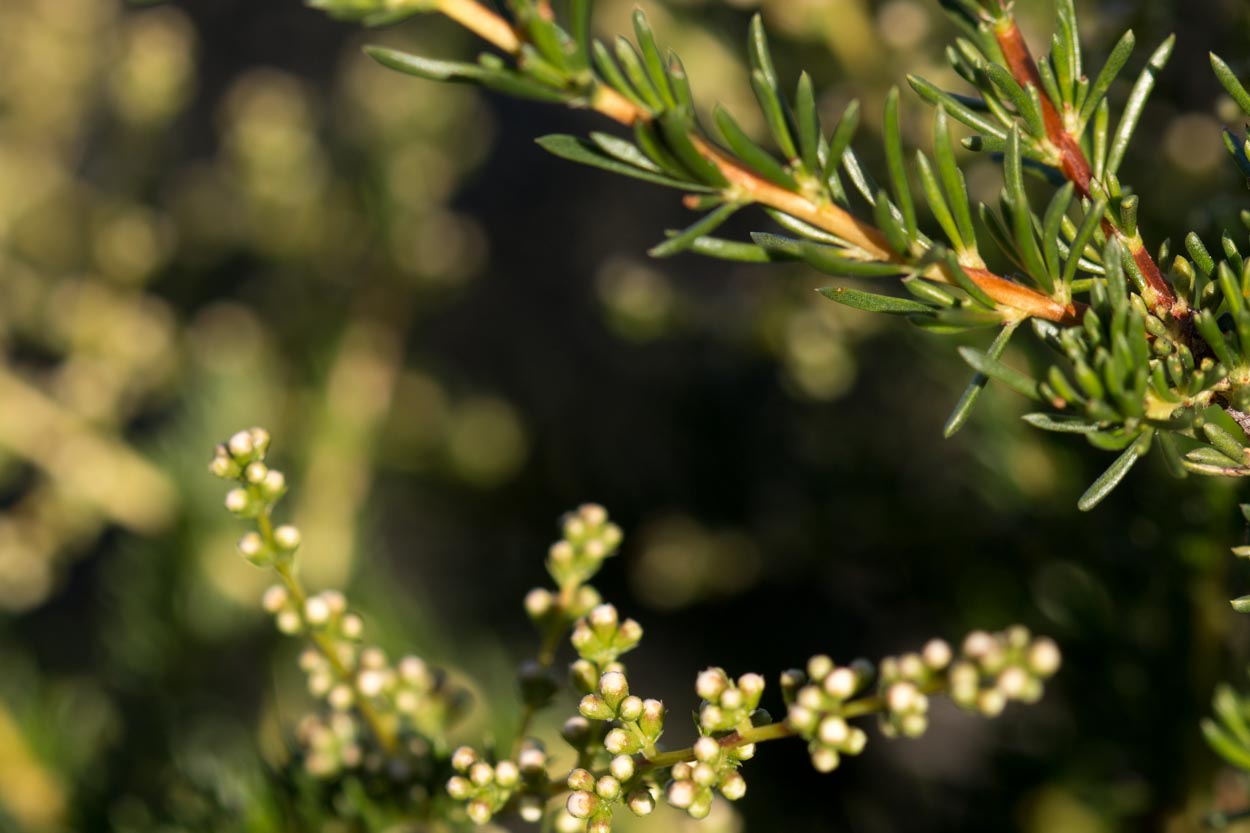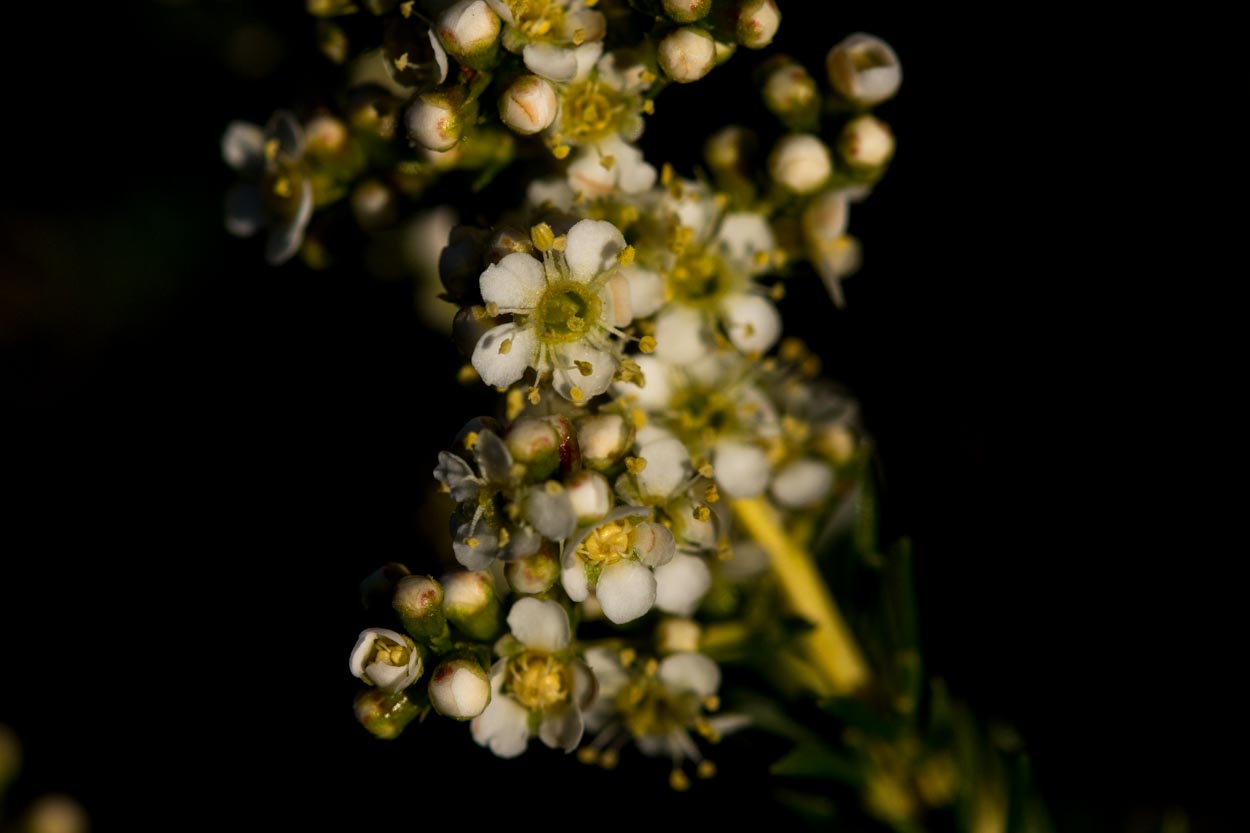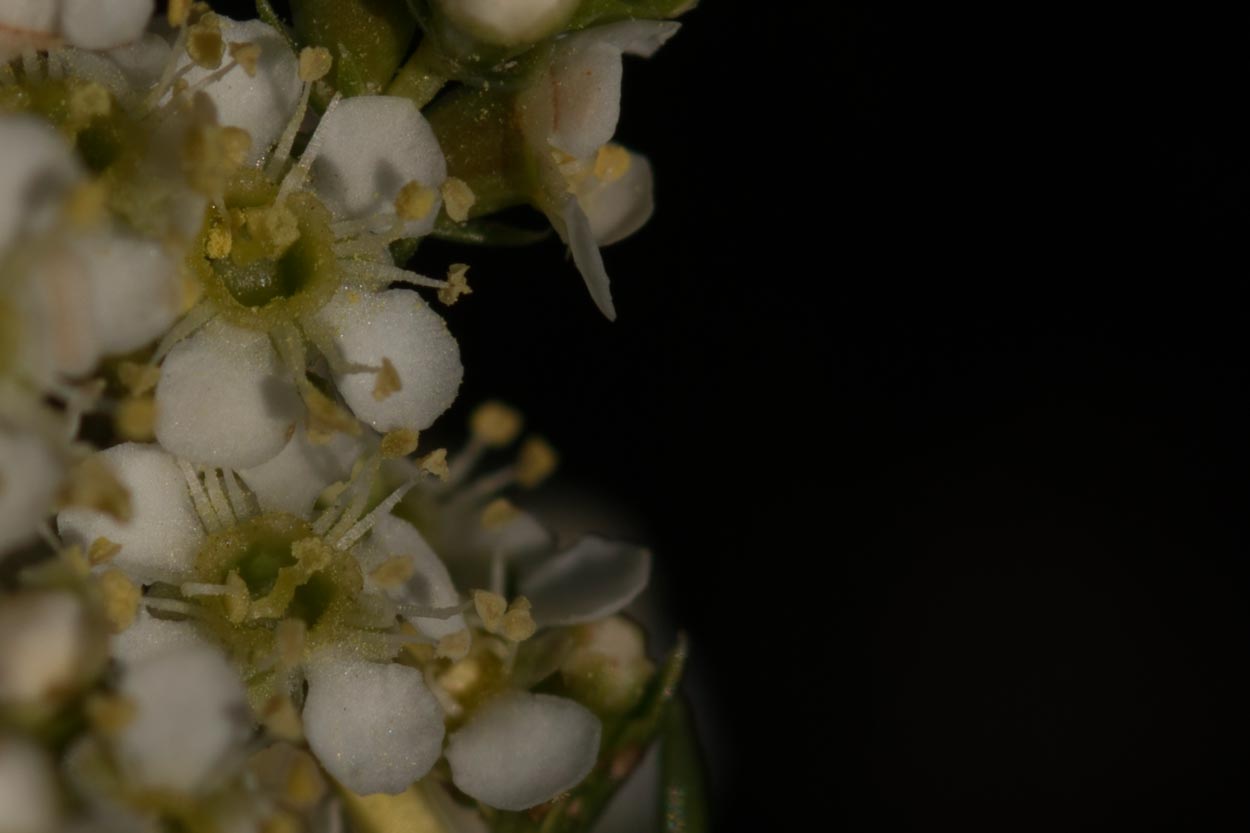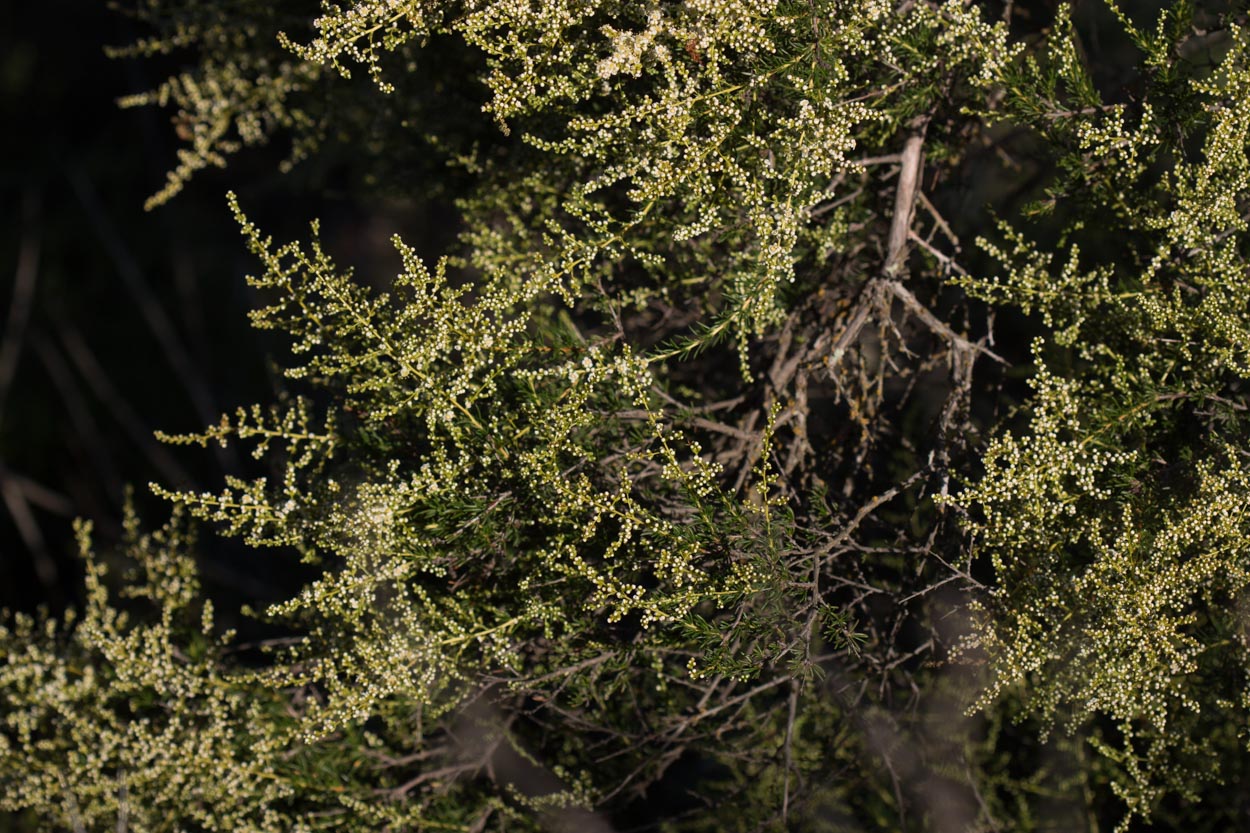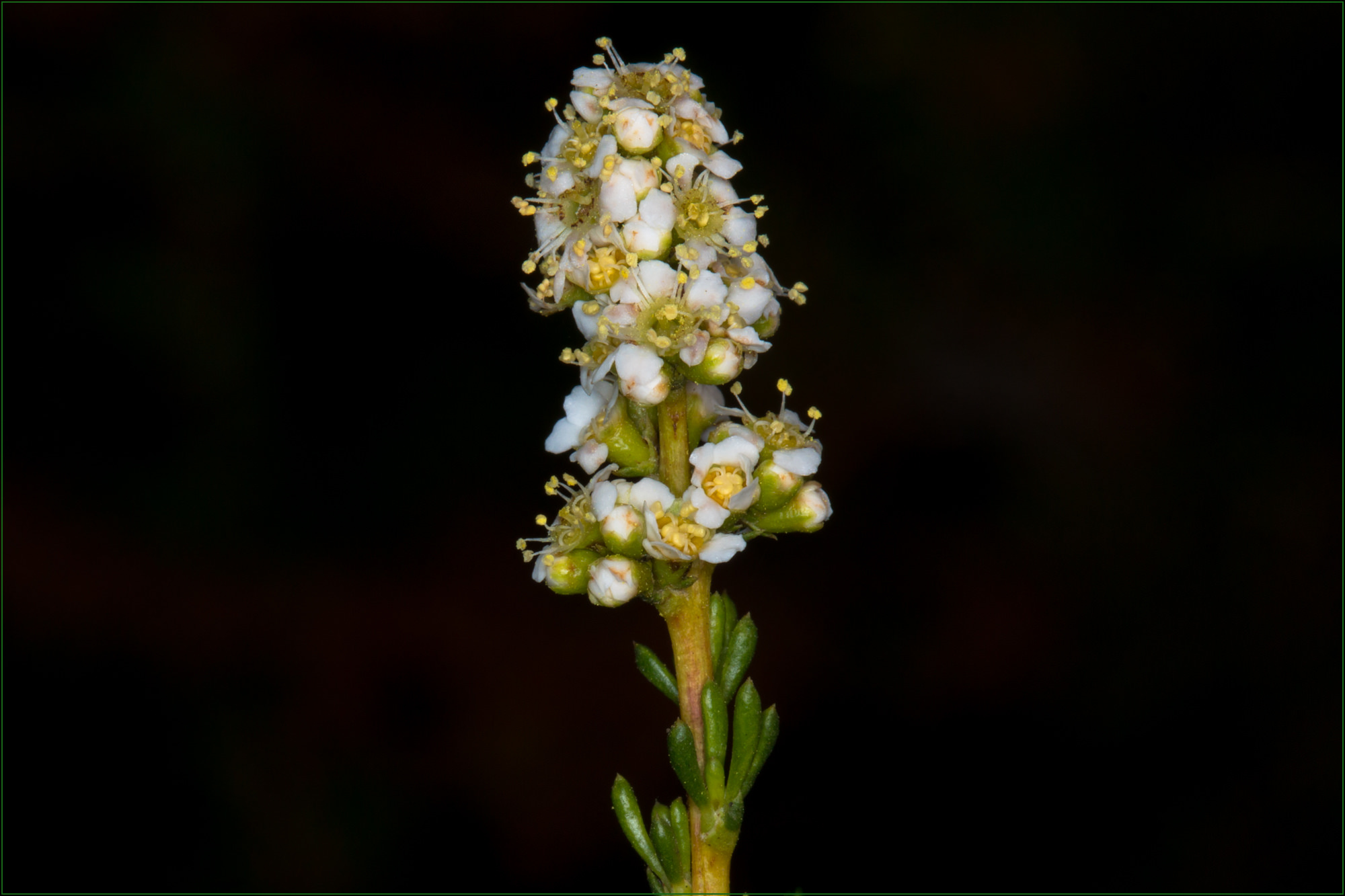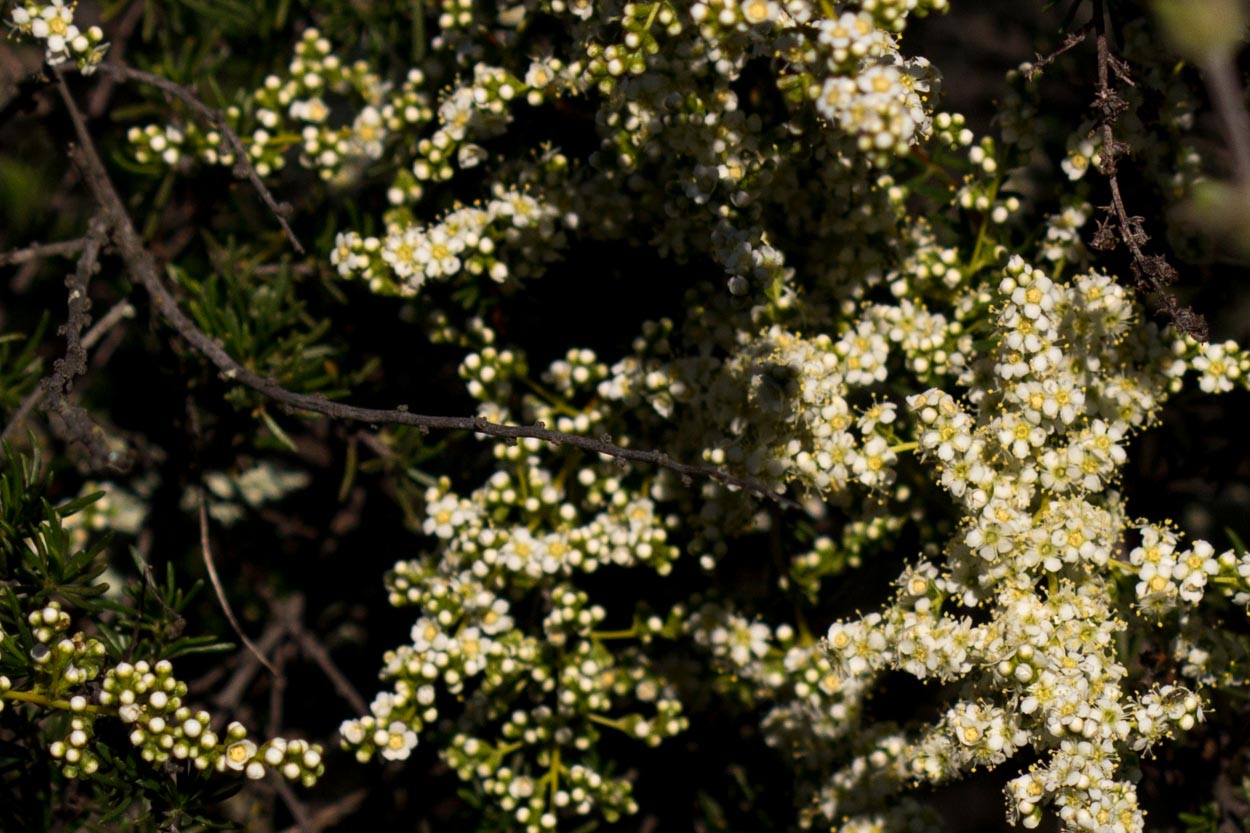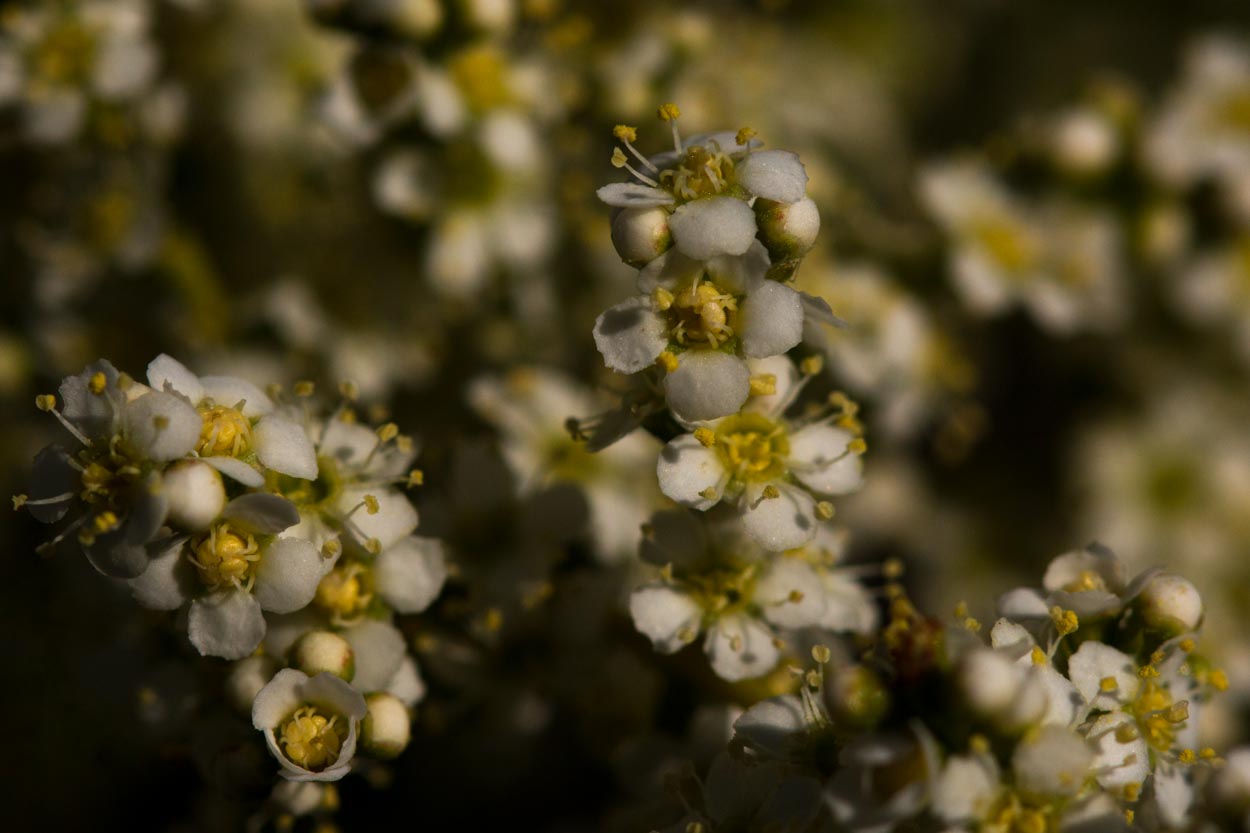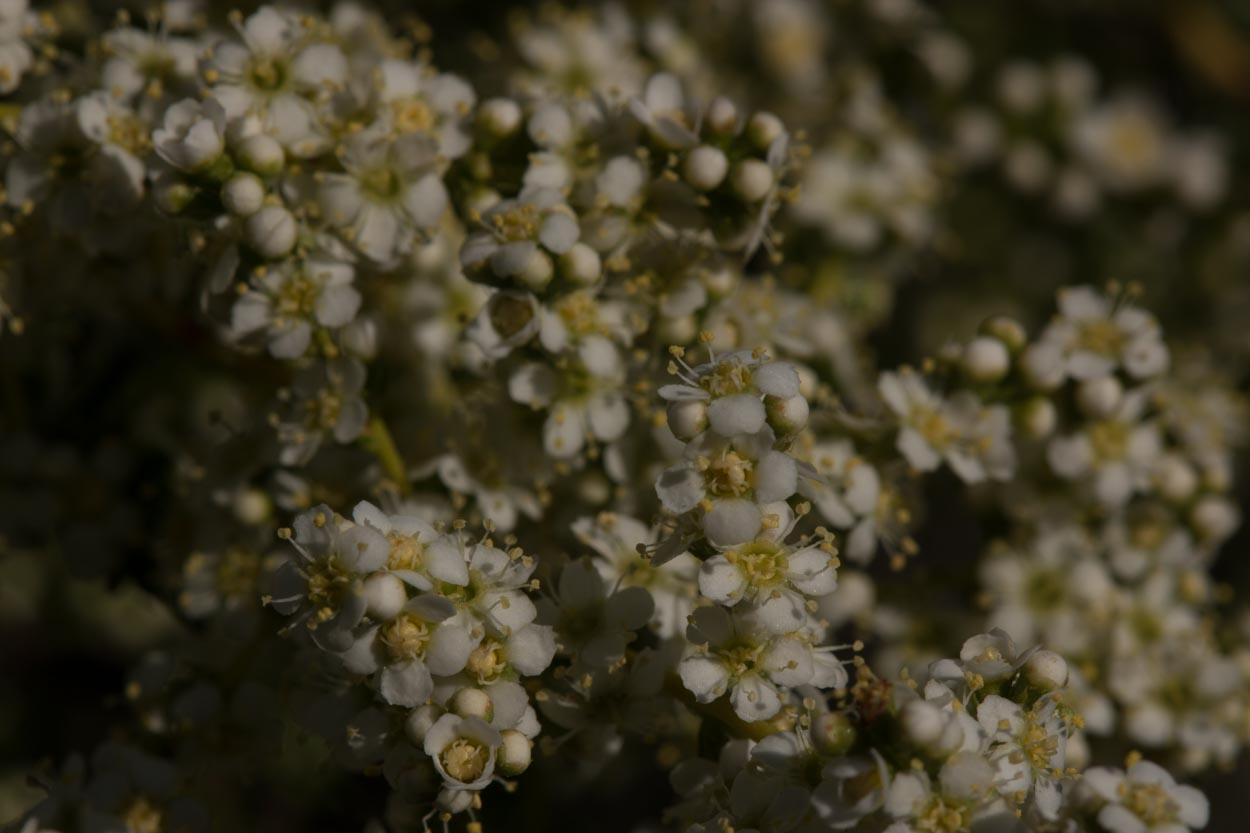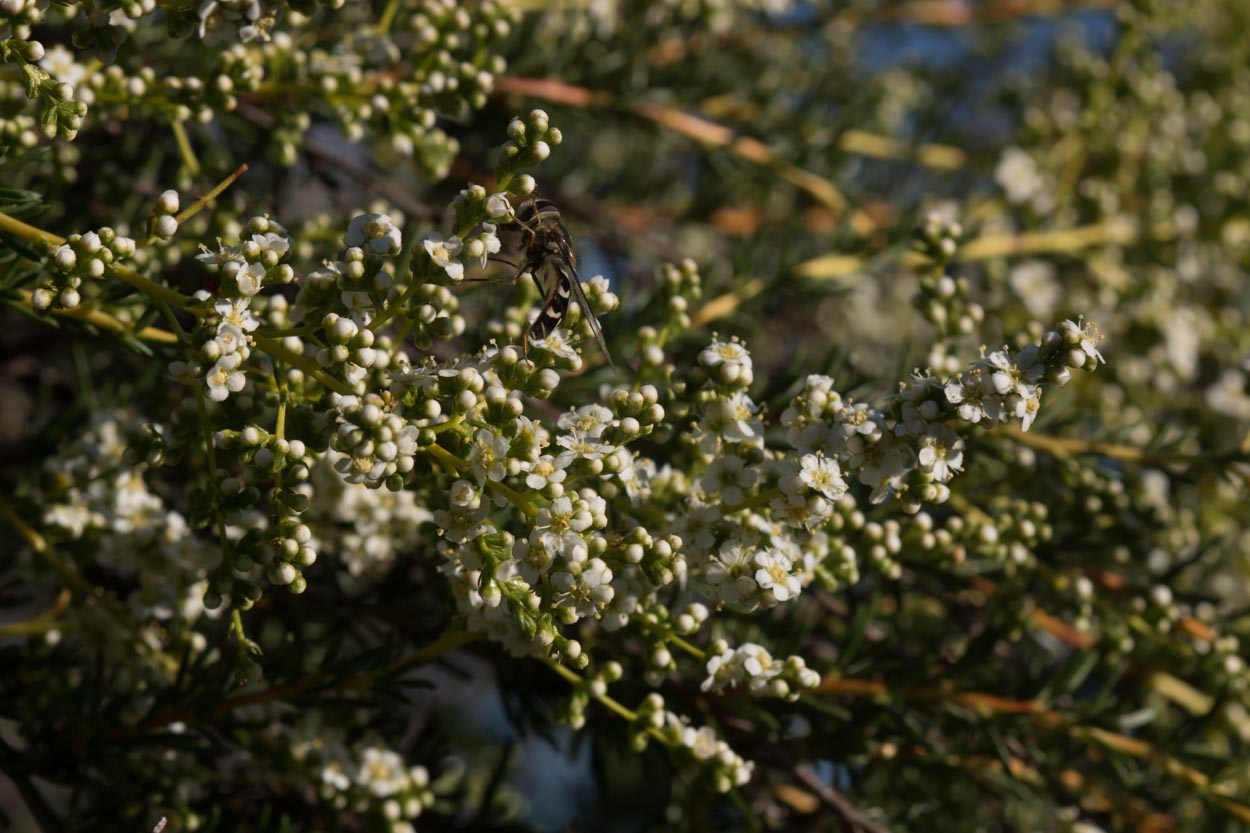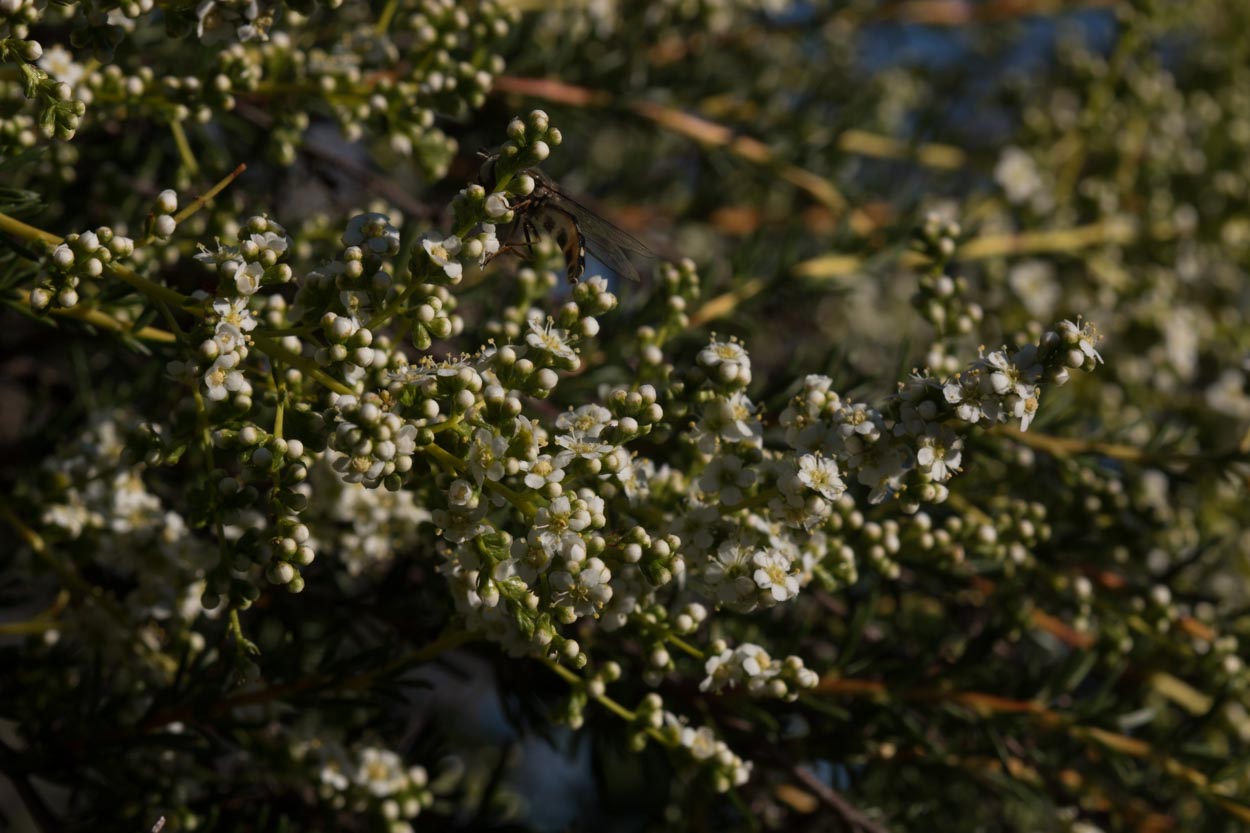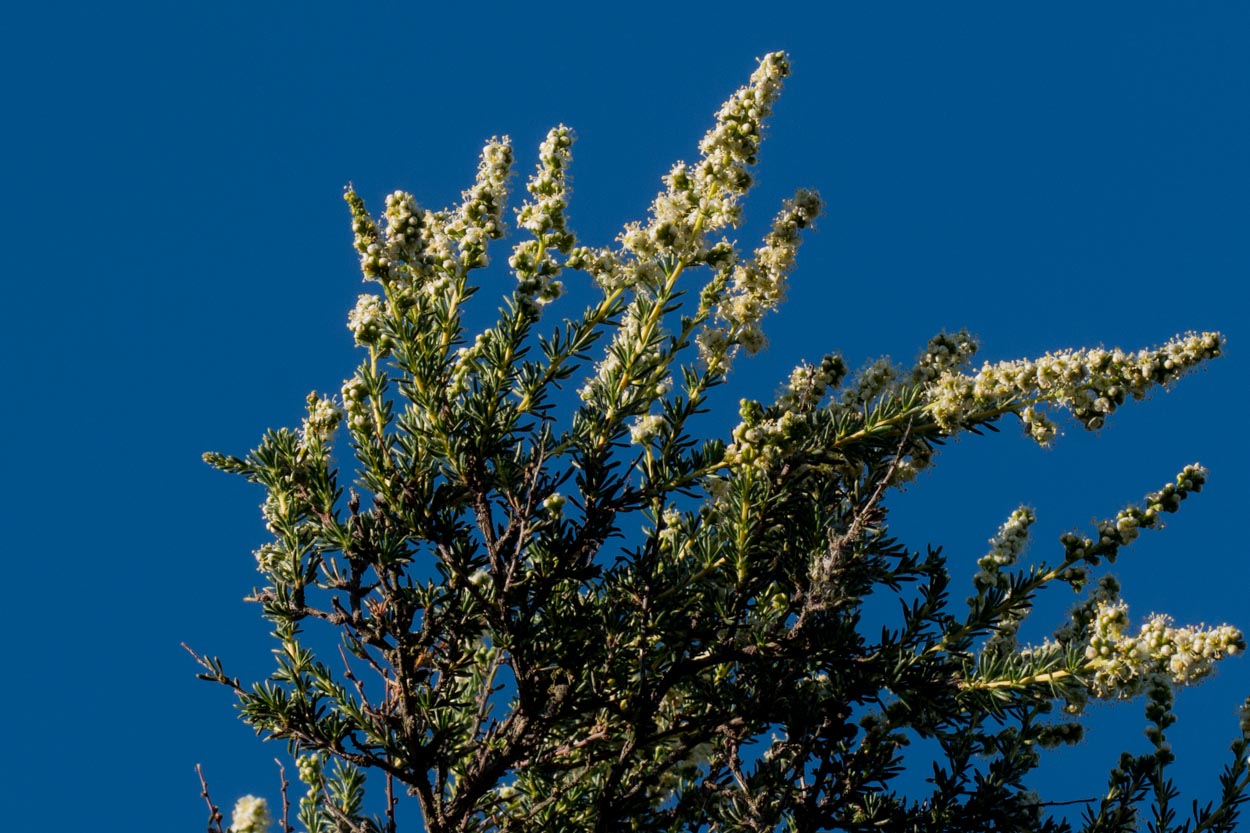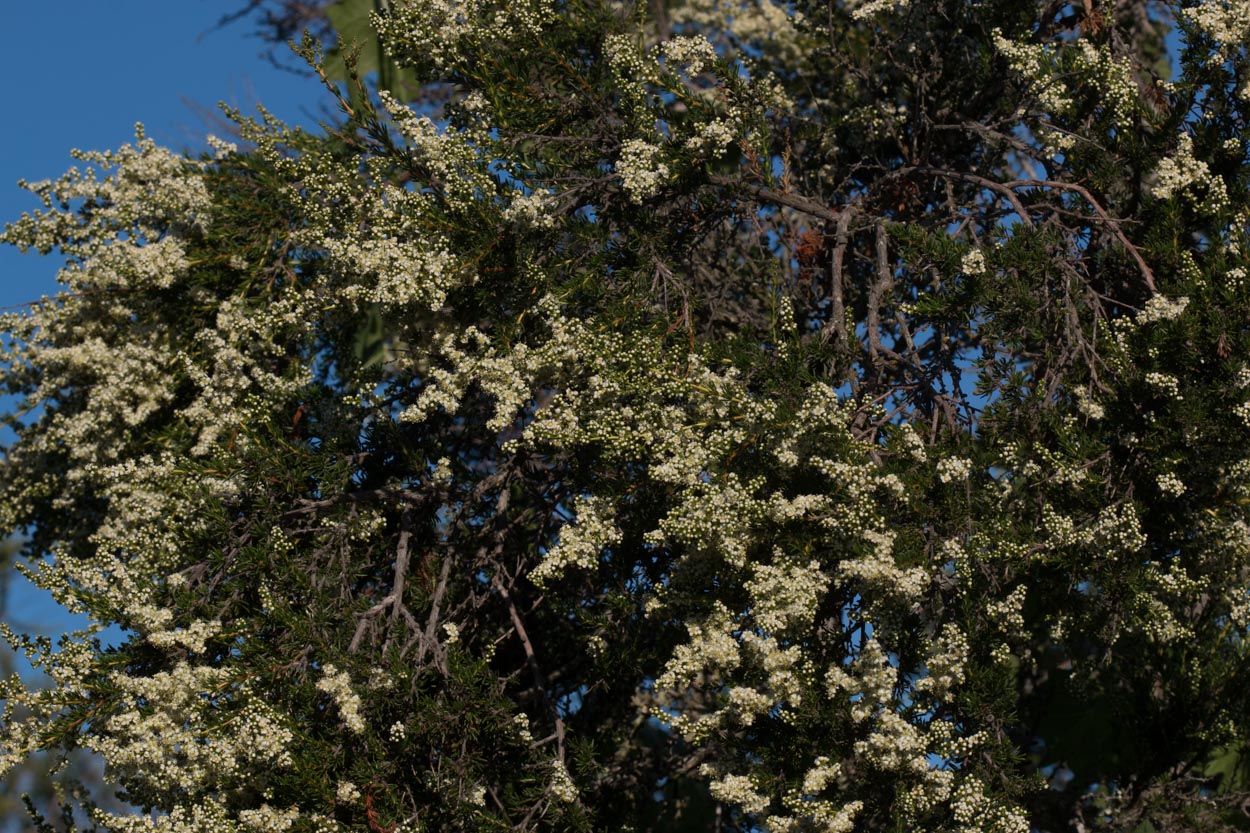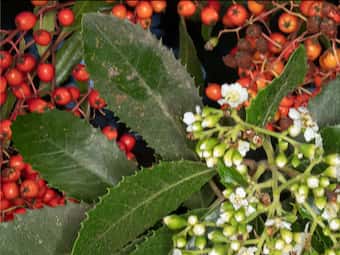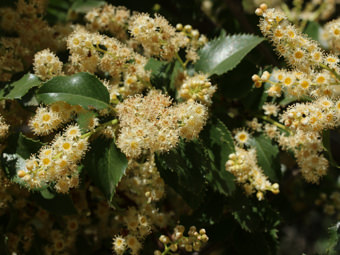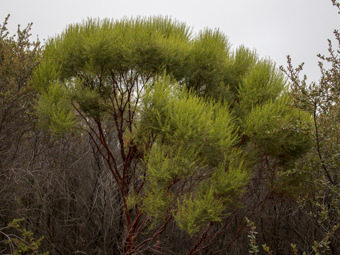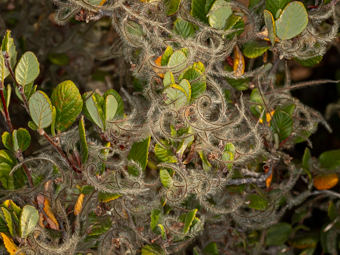Chamise
- Adenostoma fasciculatum
| Common Name(s): | Chamise |
| Scientific Name: | Adenostoma fasciculatum |
| Family: | Rosaceae (Rose) |
| Plant Type: | Shrub |
| Size: | up to 10 feet |
| Habitat: | dry slopes in Chaparral and Sage Scrub |
| Blooms: | February to September |
| Fire Response: | Stump Sprout or Seed |
Chamise is one of the key members of the Chaparral plant community and also important for its fire-survival strategies. It is most abundant on south-facing slopes where many other plants cannot survive, where it thrives because it is well adapted.
Chamise has a strong basal burl and peeling, reddish brown bark. The short needle-like leaf clusters/bundles on this plant conserve moisture and remain green throughout the summer - they are evergreen. Look carefully and note that the clusters alternate on the branches. Leaves are hard, thick and leathery to limit loss of water thru evaporation. Clusters of white flowers appear along the ends of branches, each flower about 1/4 inch or less in diameter. The flowers bloom from April to June before giving way to brown seed vessels. Chamise is a member of the Rose family. There are 5 petals and 15 stamens (5 groups of 3 stamens). Note: Red Shank has 10 Stamems (five groups of two.)
This plant is both hardy to fire, owing to its strong basal burl, and susceptible to catching and spreading fire because of its dry branches and resinous wood. This second characteristic earns it its common names Greasewood and Chamise, the latter coming from Chama which means "flame" in Portuguese. In addition to its base, the plant can also recover by seed after a fire.
The genus name Adenostoma refers to the plant's having glands at the mouths of the flower sepals. The species name fasciculatum derived from a Latin word meaning "bundles" and describing the way the leaves are attached to the leaf stem in little bunches or 'fascicles.'.
Contributed by Liz Baumann
Featured Plants in the Rosaceae (Rose) Family:
Last modified: May 17 2024 10:54:27.
Number of Images: 13
Image Size Total: 2,565,742
References:
Wildflowers of the Santa Monica Mountains, by Milt McAuleyFlowering Plants: The Santa Monica Mountains, Coastal and Chaparral Regions of Southern California, by Nancy Dale
Chumash Ethnobotany: Plant Knowledge Among the Chumash People, by Jan Timbrook
Leaf Shapes Primer - Botanical Terms for Leaves: - Link
